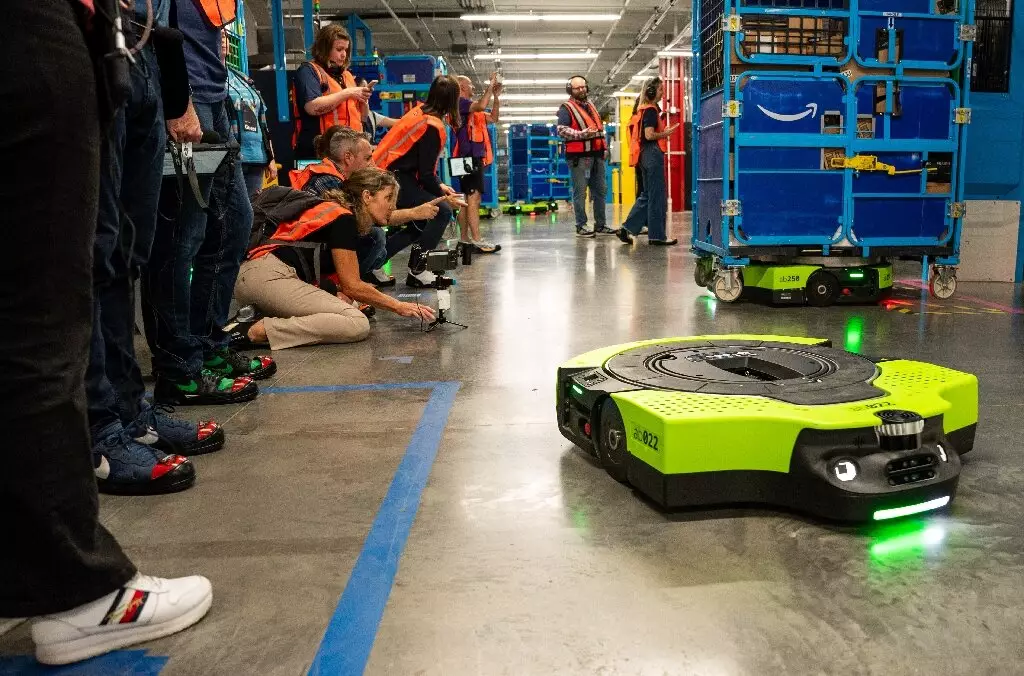Amazon, a titan in the e-commerce industry, is relentlessly advancing its grasp on consumers’ daily lives, employing cutting-edge technology across diverse sectors including logistics, healthcare, and entertainment. This article delves into the recent innovations introduced by Amazon, their implications, and the controversies enveloping the company’s expansionist strategies.
Amazon has long been recognized for its speed-centric logistics, and its latest advancements are testament to this legacy. Recent announcements highlighted a sophisticated system employed in delivery vans, designed to streamline the delivery process. Doug Herrington, the head of Amazon Stores, revealed that this technology allows vehicles to identify delivery stops and notify drivers about which packages to unload. The emphasis on rapid delivery is central to Amazon’s strategy; Herrington noted that increasing speed not only enhances efficiency but also encourages consumers to shop more frequently. With the assurance of “the fastest Prime delivery speeds around the world” planned for 2024, Amazon is solidifying its position as the go-to platform for online shopping.
The company’s financial prowess is further exemplified by its remarkable ability to reduce shipping costs. Herrington reported a decrease in the cost per unit shipped by 45 cents, an impressive feat given Amazon’s colossal sales volumes. While 2022 saw Amazon generating over $30 billion in profits from $575 billion in revenue, the company’s comprehensive ecosystem—spanning retail, advertising, and cloud computing—ensures a continuous cash flow that fuels further investments and innovations.
At the core of Amazon’s strategy lies a well-orchestrated flywheel model. Analysts like Suzy Davidkhanian of eMarketer underscore that the Amazon Prime membership is the linchpin connecting various facets of the business. This membership not only bolsters customer loyalty but also drives profitability across diverse domains such as retail, cloud services, and streaming. Such integration has led to unprecedented growth in user engagement, as Amazon continually enhances its offerings, including a significant foray into the world of streaming through high-profile agreements, such as acquiring streaming rights for NFL games.
However, this robust model is not without its challenges. Amidst rapid growth and a sprawling marketplace, Amazon faces legal scrutiny from the U.S. government, accused of monopolistic practices aimed at stifling competition. The intricate dance between leveraging consumer data for targeted advertising and maintaining compliance with antitrust laws creates a precarious balancing act for the company.
In an ambitious shift towards healthcare, Amazon is developing its presence within the medical domain through its service, One Medical. For a nominal monthly fee, Prime members gain access to video consultations, medication refills, and health consultations. Additionally, Amazon Pharmacy leverages its extensive delivery network, promising rapid fulfillment of prescription orders—aspiring to deliver medications to nearly half of patients within 24 hours by the end of the next year. This convergence of technology and healthcare reflects Amazon’s goal of positioning itself as an all-encompassing platform, catering to a diverse range of consumer needs.
The healthcare initiative stands to be especially lucrative, tapping into a sector rich with potential. However, questions surrounding data privacy and the ethical implications of intertwining commercial entities with personal health data loom prominently. Will consumers embrace this shift, or will hesitations about privacy lead to a backlash against Amazon’s encroachment into healthcare?
AI Integration: A Personalized Shopping Experience
Another arena where Amazon is making significant strides is in the implementation of artificial intelligence across its online platform. Using AI to enhance customer experiences, Amazon tailors product descriptions and promotions based on individual user preferences, thereby streamlining the buying journey. The ability for shoppers to see descriptions customized to their unique tastes, such as highlighting “strawberry flavor” for specific products, exemplifies the personal touch made possible through technology.
In its logistics centers, automation continues to play a pivotal role. With robots managing the intricate process of sorting and transporting packages, safety and efficiency are touted as major benefits. However, critics raise alarms about the pressure placed on employees in terms of delivery speeds, emphasizing that this relentless push for efficiency can create hazardous working conditions.
The Road Ahead: Balancing Innovation with Responsibility
As Amazon forges ahead, the company must navigate the complexities of balancing innovation with regulatory scrutiny and ethical considerations. Its ongoing expansion, driven by a desire for enhanced convenience and service, represents both a remarkable opportunity and a formidable challenge. The unfolding narrative surrounding Amazon’s operations poses critical questions about the future of e-commerce and the role of giant corporations in society. The next phase of Amazon’s journey will undoubtedly shape the landscape of retail, healthcare, and technology, but the pursuit of progress must be approached with a commitment to ethical practices and an awareness of its societal implications.

